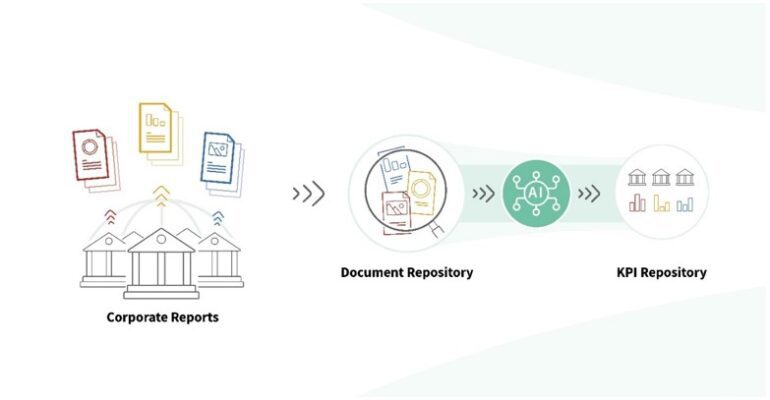- Project Gaia utilizes AI, particularly large language models (LLMs), for efficient extraction and analysis of corporate climate disclosures.
- Gaia Phase I collaborated with climate experts to develop a proof of concept (PoC) addressing stakeholder needs.
- The PoC enables comprehensive analysis and harmonizing metrics despite diverse naming conventions and definitions.
- Challenges include LLM integration issues, which are resolved through strategic design choices outlined in the project report.
- Gaia’s agile platform offers scalable analysis, relevant beyond climate data, showcasing AI’s transformative potential.
Main AI News:
In the realm of climate risk analysis, Project Gaia emerges as a groundbreaking initiative, leveraging advanced artificial intelligence (AI) technologies, particularly large language models (LLMs), to streamline the extraction and analysis of corporate climate-related disclosures. Gaia Phase I embarked on a journey of collaboration with climate risk experts from central banks and supervisory authorities, meticulously crafting a solution that resonates with the needs articulated by these stakeholders. The culmination of this endeavor resulted in the delivery of a proof of concept (PoC) that not only showcases the technical feasibility of the concept but also lays the foundation for transformative change.
Through the automation of information extraction, the Gaia PoC heralds a new era of comprehensive climate-related indicator analysis. One of its remarkable achievements is the provision of harmonized metrics, transcending the challenges posed by the diversity in naming conventions and definitions across various jurisdictions. By integrating semantic search capabilities with iterative and systematic LLM prompting, Gaia triumphs over the discrepancies in disclosure frameworks, ushering in an era of unprecedented transparency and comparability in climate-related information.
However, the integration of LLMs into the Gaia application was not devoid of challenges. Technical hurdles such as long response times, randomness in responses, and hallucinations presented formidable obstacles. Yet, the project report elucidates a series of strategic design choices that enabled the Gaia PoC to surmount these impediments, ensuring its effectiveness and reliability.
Beyond its immediate implications for climate-related data analysis, Project Gaia exemplifies the transformative potential of AI-enabled tools in reshaping existing workflows. The macro analysis findings showcased in this report, encompassing 20 key performance indicators (KPIs) for 187 financial institutions over a five-year period, underscore the agility and scalability of the platform. Moreover, its adaptable design renders it pertinent across a spectrum of domains, transcending its original scope and demonstrating its relevance for central banks and the financial sector at large.
Conclusion:
Project Gaia’s innovative approach to climate risk analysis, driven by AI technologies, signifies a pivotal shift in the market. By streamlining data extraction and analysis processes, Gaia not only enhances transparency and comparability in climate-related information but also sets a precedent for AI-driven solutions across industries. Its adaptability and scalability underscore the transformative potential of generative AI, signaling a new era of efficiency and insight in business analytics.

